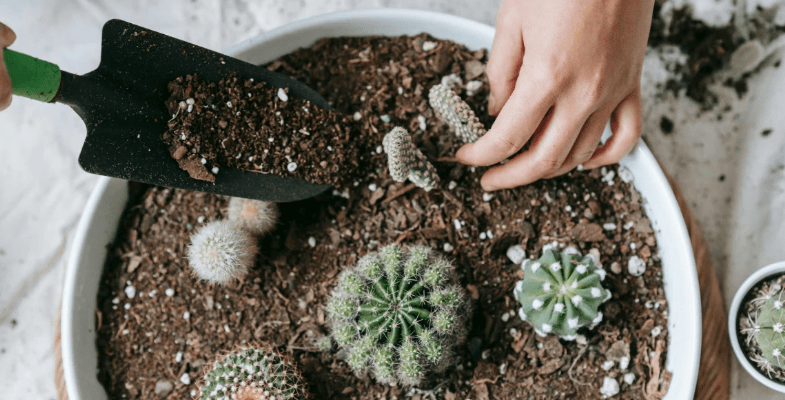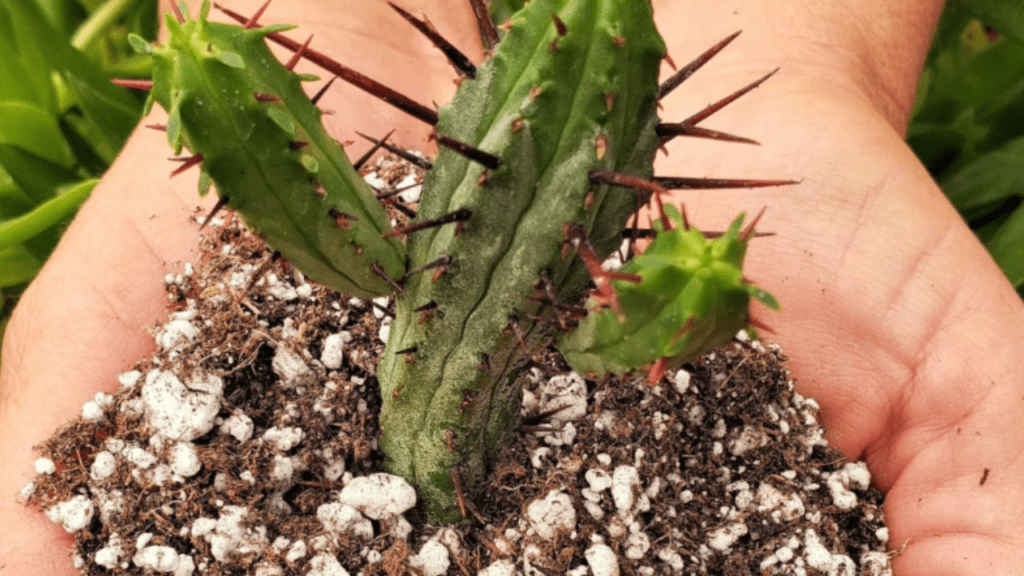
How to Grow a Healthy Cactus in Soil: A Complete Guide
Cacti are unique and low-maintenance plants that can add a touch of desert beauty to any home or garden. However, growing a healthy cactus in soil requires some specific care and attention. In this complete guide, we will cover everything you need to know about caring for your cactus, from choosing the right soil mix to providing the proper sunlight and water requirements. By following these tips, you can ensure that your cactus thrives and remains healthy for years to come. Whether you’re a beginner or an experienced plant enthusiast, this guide will provide you with the knowledge and tools to successfully grow a beautiful and healthy cactus in soil.
Table of Contents
ToggleUnderstanding Cactus Needs
Basic characteristics and types of cacti
Cacti are unique and low-maintenance plants that come in a variety of shapes, sizes, and colors. They are known for their ability to store water in their thick stems and leaves, making them well-suited to dry and arid environments. There are over 2,000 species of cacti, ranging from small, round shapes to tall, branching varieties. Some common characteristics of cacti include their spines, which help reduce water loss and protect the plant from predators, and their ability to produce colorful flowers. When it comes to growing cacti in soil, it’s important to choose a well-draining potting mix specifically designed for succulents and cacti. This will help prevent root rot and other issues that can arise from overwatering. Additionally, cacti thrive in bright, indirect sunlight and prefer to be watered sparingly, allowing the soil to dry out between waterings. By understanding the basic characteristics and types of cacti, you can provide the proper care and environment for your cactus to thrive.
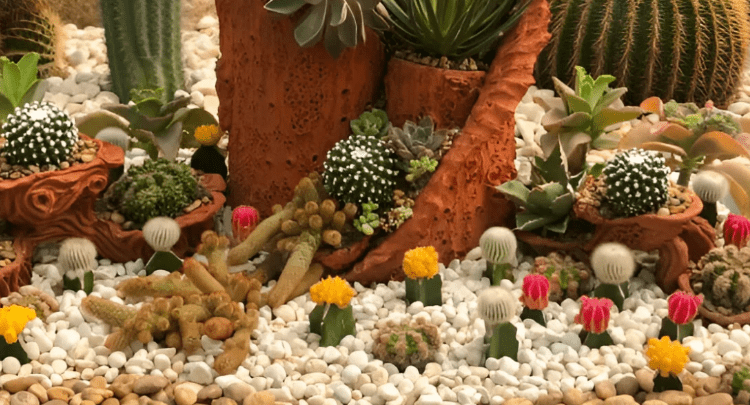
Natural habitat and soil conditions of cacti
Cacti are well-known for their ability to store water in their thick stems and leaves, making them well-suited to dry and arid environments. With over 2,000 species, cacti come in a wide range of shapes and sizes, from small, round varieties to tall, branching plants. One common characteristic of cacti is their spines, which help reduce water loss and protect the plant from predators. They also have the ability to produce vibrant and colorful flowers. When it comes to growing cacti in soil, it’s important to use a well-draining potting mix specifically designed for succulents and cacti. This will help prevent issues like root rot that can occur from overwatering. Cacti thrive in bright, indirect sunlight and prefer to be watered sparingly, allowing the soil to dry out between waterings. By understanding the natural habitat and soil conditions of cacti, you can provide the proper care and environment for your cactus to thrive.
Why proper soil is crucial for cactus health
Cacti are unique and fascinating plants with over 2,000 different species, each with their own shapes, sizes, and characteristics. Proper soil is crucial for cactus health because it plays a vital role in their ability to thrive. Cacti require well-draining soil specifically designed for succulents and cacti to prevent issues like root rot that can occur from overwatering. This type of soil allows water to pass through quickly, mimicking the natural desert conditions where cacti typically grow. Additionally, cacti thrive in bright, indirect sunlight and prefer to be watered sparingly, allowing the soil to dry out between waterings. Understanding the natural habitat and soil conditions of cacti is essential for providing the proper care and environment for these unique plants to flourish.
Choosing the Right Soil for Cacti
Key components of ideal cactus soil (e.g., well-draining, low organic matter)
When it comes to choosing the right soil for your cactus, there are a few key components to keep in mind. First and foremost, cacti require a well-draining soil that allows water to pass through quickly. This is essential for preventing issues like root rot, which can occur if the soil becomes waterlogged. In addition to being well-draining, cactus soil should also have low organic matter. This is because cacti naturally grow in sandy, gravelly soil with minimal organic material. By mimicking these natural conditions, you can help your cactus thrive in its new environment. When selecting soil for your cactus, look for specialized cactus or succulent soil mixes that are specifically designed to meet the unique needs of these plants. Providing the right soil is crucial for the health and well-being of your cactus, so be sure to choose a soil that meets these key components for optimal growth.
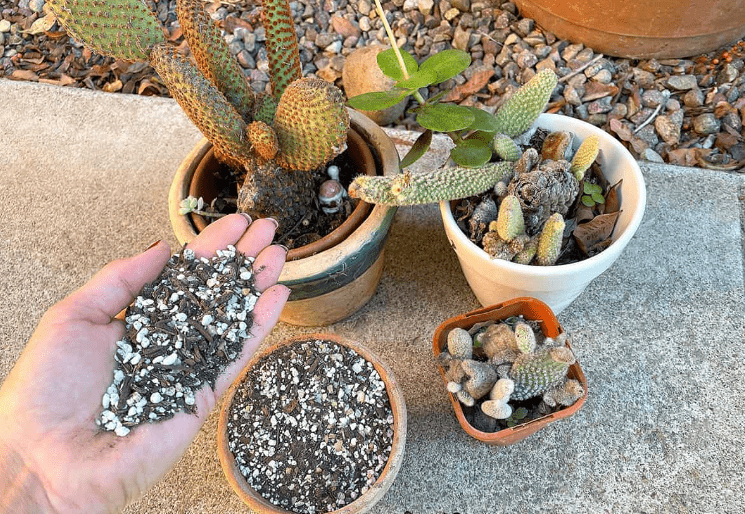
Differences between commercial cactus soil and homemade mixes
When it comes to choosing soil for your cactus, there are a few key differences between commercial cactus soil and homemade mixes. Commercial cactus soil is specifically formulated to meet the unique needs of cacti and succulents. It is designed to be well-draining and have low organic matter, mimicking the natural sandy, gravelly conditions that cacti thrive in. Commercial cactus soil also often contains added ingredients like perlite or sand to further improve drainage and aeration.
On the other hand, homemade soil mixes can vary widely in their composition. While some homemade mixes may be well-suited for cacti, others may not provide the necessary drainage and low organic matter that cacti require. It can be challenging to ensure that a homemade mix provides the right balance of components for optimal cactus growth.
Ultimately, the choice between commercial cactus soil and homemade mixes comes down to the specific needs of your cactus and your level of expertise in creating a well-draining, low organic matter soil mix. If you are new to caring for cacti, it may be best to start with a commercial cactus soil mix to ensure that your plants have the best possible growing conditions.
Ingredients for making your own cactus soil mix
Can include a variety of components. Some common ingredients for a homemade cactus soil mix are coarse sand, perlite, gravel, and a small amount of organic matter such as coconut coir or peat moss. These ingredients are mixed in specific proportions to create a well-draining and low organic matter soil mix that mimics the natural sandy, gravelly conditions that cacti thrive in. It is important to ensure that the mix provides the necessary drainage and aeration for cacti to grow healthy roots and avoid issues such as root rot. However, creating the right balance of components in a homemade mix can be challenging and may require some trial and error. If you are new to caring for cacti, it may be best to start with a commercial cactus soil mix to ensure that your plants have the best possible growing conditions. As you gain more experience, you can experiment with creating your own soil mix to meet the specific needs of your cacti. Remember to always research and understand the requirements of your cacti before creating a homemade soil mix.
Preparing Soil for Planting Cacti
Steps to prepare soil for potting or planting cacti
- Choose a well-draining soil mix: Cacti require well-draining soil to prevent root rot. You can use a commercial cactus soil mix or create your own mix using ingredients like coarse sand, perlite, gravel, and a small amount of organic matter.
- Ensure proper drainage: Before potting or planting your cacti, make sure that the pots or planting area have adequate drainage holes to prevent water from accumulating around the roots.
- Use the right potting technique: When potting cacti, gently remove the plant from its current container and carefully shake off excess soil. Place the cactus in the new pot and fill in the gaps with the prepared soil mix.
- Allow for acclimatization: After potting, give the cactus some time to acclimate to its new soil environment. Water the plant sparingly and gradually increase the amount of water as the roots become established.
- Monitor and adjust as needed: Keep an eye on your cacti and adjust the watering and soil mix as needed based on the plant’s growth and health. Remember that different cactus species may have specific soil requirements, so it’s important to research and understand the needs of your particular plants.
Sterilizing soil to prevent pests and diseases
Is an important step in ensuring the health of your plants. One method of sterilizing soil is through the use of heat. You can do this by baking the soil in the oven at a high temperature for a certain period of time. This will kill off any harmful organisms that may be present in the soil. Another method is to use a chemical sterilizer, which can be found at your local garden center. This will help to eliminate any pests or diseases that could potentially harm your plants. It’s important to take this step before planting to ensure that your cacti have a healthy environment to grow in. By following these steps and taking the time to properly sterilize your soil, you can help prevent future problems and ensure the success of your cacti.
Adjusting soil pH for optimal cactus growth
Is crucial for the health and success of your plants. Cacti thrive in soil with a pH level between 5.5 and 6.5. If the pH level is too high or too low, it can affect the plant’s ability to absorb nutrients from the soil. To adjust the pH level, you can use products such as sulfur or lime to lower or raise the pH level, respectively. It’s important to test the soil before making any adjustments to ensure that you are providing the best environment for your cacti to grow. Additionally, you can also use soil mixes specifically designed for cacti and succulents, which have the ideal pH level and provide the necessary drainage for optimal growth. By taking the time to adjust the soil pH and provide the right growing conditions, you can ensure that your cacti will thrive and remain healthy.
Planting Cactus in Soil
How to select the right pot for cactus planting
Choosing the right pot for your cactus is essential for its growth and health. When selecting a pot for your cactus, it’s important to consider the size and drainage. Cacti prefer pots with drainage holes to prevent water from pooling at the bottom, which can lead to root rot. A pot that is slightly larger than the cactus’s root system will allow for proper growth and development. Additionally, consider the material of the pot. Terra cotta pots are a popular choice for cacti as they allow for air circulation and water evaporation, which can help prevent overwatering. Plastic pots are also a good option as they retain moisture well. Ultimately, the most important factors to consider when selecting a pot for your cactus are size, drainage, and material. By choosing the right pot, you can provide the best growing environment for your cactus and ensure its long-term health and success.
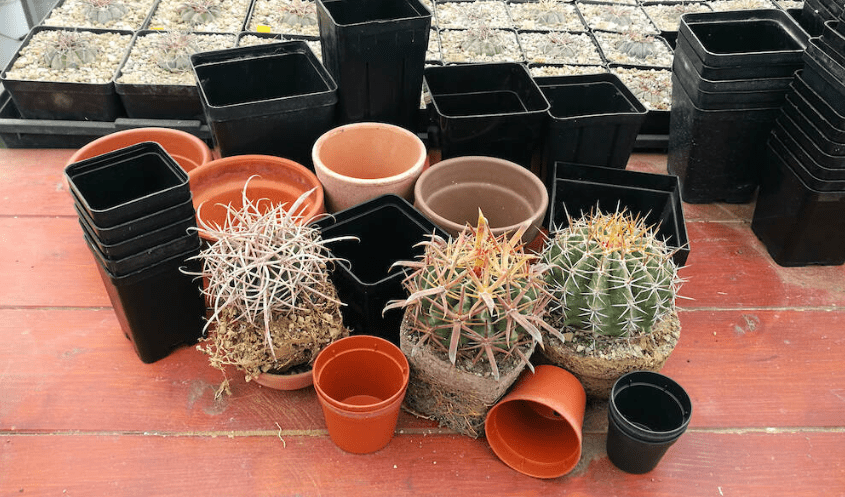
Step-by-step guide to planting cactus in soil
- Choose the right pot: Cacti prefer pots with drainage holes to prevent water from pooling at the bottom, which can lead to root rot. A pot that is slightly larger than the cactus’s root system will allow for proper growth and development.
- Consider the material: Terra cotta pots are a popular choice for cacti as they allow for air circulation and water evaporation, which can help prevent overwatering. Plastic pots are also a good option as they retain moisture well. Ultimately, the most important factors to consider when selecting a pot for your cactus are size, drainage, and material.
- Prepare the soil: Use well-draining cactus or succulent soil mix to ensure proper drainage and avoid waterlogged soil, which can lead to root rot.
- Plant the cactus: Gently remove the cactus from its original container, being careful not to damage the roots. Place the cactus in the new pot and fill in the remaining space with soil, gently pressing down to secure the plant. Be cautious of the cactus spines and use gloves if necessary.
- Water the cactus: After planting, give the cactus a thorough watering and allow the soil to dry out before watering again. Cacti are drought-tolerant plants and prefer to dry out between waterings.
- Provide proper sunlight: Place the cactus in a sunny location, as they thrive in bright, indirect sunlight.
By following these steps, you can successfully plant and care for your cactus in soil, providing the best growing environment for your cactus and ensuring its long-term health and success.
Watering Techniques for Cactus in Soil
Understanding the watering needs of cacti
Is crucial for their overall health and growth. When planting a cactus in soil, it’s important to be mindful of their watering requirements. After planting the cactus, it’s essential to give it a thorough watering and then allow the soil to dry out before watering again. Cacti are drought-tolerant plants and prefer to dry out between waterings.
It’s also important to provide the cactus with proper sunlight. Placing the cactus in a sunny location where they can receive bright, indirect sunlight is essential for their growth and overall health.
When handling cacti, it’s important to be cautious of their spines and use gloves if necessary to avoid injury. When planting the cactus, gently remove it from its original container and be careful not to damage the roots. Place the cactus in the new pot and fill in the remaining space with soil, gently pressing down to secure the plant.
By following these steps and being mindful of the watering needs, sunlight requirements, and proper handling of cacti, you can successfully plant and care for your cactus in soil, providing the best growing environment for your cactus and ensuring its long-term health and success.
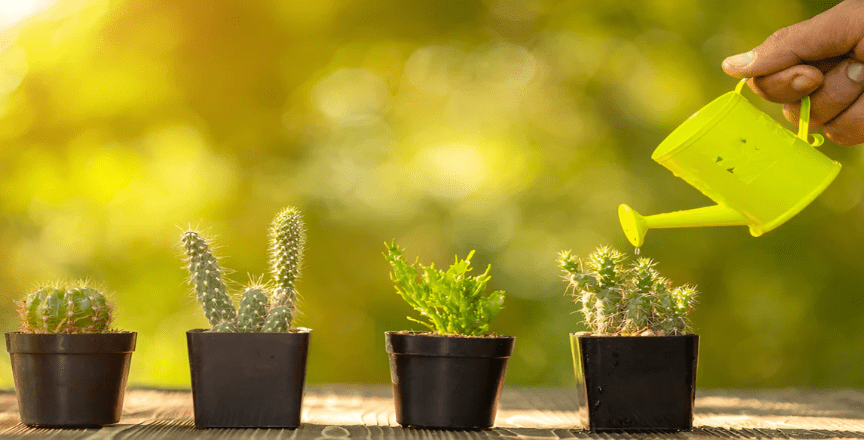
Best practices for watering cacti in different seasons
Vary based on the specific needs of the cactus and the climate in which it is being grown. In general, cacti are drought-tolerant plants and prefer to dry out between waterings. During the growing season in the spring and summer, it is best to water cacti when the top inch of soil is dry, typically every 1-2 weeks. However, during the dormant season in the fall and winter, cacti require less water and should only be watered sparingly, about every 3-4 weeks. It’s important to adjust the watering schedule based on the specific needs of the cactus and the environmental conditions. In addition to proper watering, it’s also important to provide the cactus with proper sunlight. Placing the cactus in a sunny location where they can receive bright, indirect sunlight is essential for their growth and overall health. When handling cacti, it’s important to be cautious of their spines and use gloves if necessary to avoid injury. When planting the cactus, gently remove it from its original container and be careful not to damage the roots. Place the cactus in the new pot and fill in the remaining space with soil, gently pressing down to secure the plant. By following these steps and being mindful of the watering needs, sunlight requirements, and proper handling of cacti, you can successfully plant and care for your cactus in soil, providing the best growing environment for your cactus and ensuring its long-term health and success.
Signs of overwatering and underwatering
Can help you determine the watering needs of your cactus. Overwatering can lead to root rot and other issues, so it’s important to look out for signs such as yellowing or wilting of the cactus, mushy or blackened roots, and a musty smell coming from the soil. On the other hand, underwatering can cause the cactus to shrivel, with the skin becoming wrinkled and the soil feeling dry. It’s important to find the right balance in watering your cactus to keep it healthy and thriving. Observing the signs of overwatering and underwatering can help you adjust your watering schedule and ensure that your cactus is getting the right amount of water to support its growth. Remember to take the time to observe and care for your cactus to keep it healthy and happy.
Fertilizing Cactus in Soil
Importance of fertilizing cacti and the right type of fertilizer
Fertilizing your cactus is important for its growth and overall health. When choosing a fertilizer, look for one that is specifically formulated for cacti and succulents. This type of fertilizer will provide the nutrients that your cactus needs to thrive. You should fertilize your cactus during its active growing period, which is typically in the spring and summer months. Be sure to follow the instructions on the fertilizer package for the proper application and frequency. With the right type of fertilizer and proper care, your cactus will be able to grow and flourish in its soil environment.
How often to fertilize cacti for optimal growth
Is an important factor to consider when caring for your cactus. Fertilizing your cactus is essential for its overall health and growth. It is recommended to fertilize your cactus during its active growing period, which is typically in the spring and summer months. Using a fertilizer specifically formulated for cacti and succulents will provide the necessary nutrients for optimal growth. It is important to follow the instructions on the fertilizer package for the proper application and frequency. Over-fertilizing can be harmful to your cactus, so it is important to use the right amount at the right time. Observing and caring for your cactus is crucial to ensure its health and happiness. By providing the right type of fertilizer and proper care, your cactus will be able to thrive and flourish in its environment.
Common Problems and Solutions
Identifying and treating soil-related issues (e.g., root rot, poor drainage)
Identifying and treating soil-related issues such as root rot and poor drainage is crucial for the health of your plants, including cacti. Root rot can occur when the soil is too wet and does not provide adequate drainage for the roots. To prevent this, it is important to use well-draining soil specifically designed for cacti and succulents. Additionally, ensure that the pot has drainage holes to allow excess water to escape. If you notice signs of root rot, such as black or mushy roots, it is important to repot the cactus in dry, well-draining soil and trim away any affected roots. Poor drainage can also lead to other issues such as nutrient deficiency and stunted growth. To address this, consider using a potting mix that contains materials like perlite or sand to improve drainage. Regularly monitoring the soil moisture and adjusting your watering routine can also help prevent these soil-related issues. By being proactive in identifying and treating soil-related issues, you can ensure the overall health and vitality of your cactus.
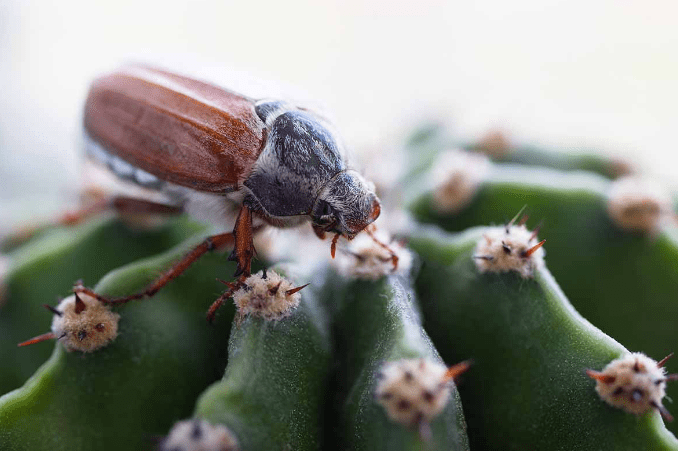
Pest management for cacti in soil
Is important to maintain the health and well-being of your plants. One common pest that can affect cacti is root rot, which is caused by overwatering or poor soil drainage. To prevent this, it is important to use well-draining soil specifically designed for cacti and succulents. Additionally, ensure that the pot has drainage holes to allow excess water to escape. If you notice signs of root rot, such as black or mushy roots, it is important to repot the cactus in dry, well-draining soil and trim away any affected roots. Poor drainage can also lead to other issues such as nutrient deficiency and stunted growth. To address this, consider using a potting mix that contains materials like perlite or sand to improve drainage. Regularly monitoring the soil moisture and adjusting your watering routine can also help prevent these soil-related issues. By being proactive in identifying and treating soil-related issues, you can ensure the overall health and vitality of your cactus.
Disease prevention and treatment
Is crucial for the health and well-being of plants, including cacti and succulents. One of the most important factors in preventing disease is proper soil drainage. To prevent issues like root rot, it is important to use well-draining soil specifically designed for cacti and succulents. Additionally, make sure that the pot has drainage holes to allow excess water to escape. If you do notice signs of root rot, such as black or mushy roots, it is important to repot the cactus in dry, well-draining soil and trim away any affected roots. Poor drainage can also lead to other issues such as nutrient deficiency and stunted growth, so it’s important to address this by using a potting mix that contains materials like perlite or sand to improve drainage. Regularly monitoring the soil moisture and adjusting your watering routine can also help prevent these soil-related issues. By being proactive in identifying and treating soil-related issues, you can ensure the overall health and vitality of your cactus and prevent disease from taking hold.
Seasonal Care for Cacti in Soil
Cacti require specific care when it comes to soil to ensure their health and prevent disease. Proper soil drainage is crucial in preventing issues such as root rot. It is important to use well-draining soil specifically designed for cacti and succulents, and to ensure that the pot has drainage holes to allow excess water to escape. If you do notice signs of root rot, it is important to repot the cactus in dry, well-draining soil and trim away any affected roots. Poor drainage can also lead to other issues such as nutrient deficiency and stunted growth, so it’s important to address this by using a potting mix that contains materials like perlite or sand to improve drainage. Regularly monitoring the soil moisture and adjusting your watering routine can also help prevent these soil-related issues. By being proactive in identifying and treating soil-related issues, you can ensure the overall health and vitality of your cactus and prevent disease from taking hold.
Benefits of Growing Cacti in Soil
Growing cacti in soil provides several benefits. Cacti are well-suited to soil because it mimics their natural environment, allowing them to thrive and grow healthy. Soil provides stability and support for the cactus roots, helping them to anchor and absorb essential nutrients and moisture. Additionally, soil provides a buffer against extreme temperatures, protecting the cactus roots from heat and cold. Cacti in soil also have the benefit of being easier to maintain and care for, as soil helps regulate moisture levels and provides a stable environment for the cactus to grow. In addition, soil can provide a more natural and aesthetically pleasing appearance for cacti, allowing for a more authentic display of their beauty and unique characteristics. Overall, growing cacti in soil offers numerous advantages that contribute to the overall health and well-being of these resilient and fascinating plants.
In conclusion, growing a healthy cactus in soil requires attention to detail and the right care. By following the tips and guidelines in this article, you can ensure that your cactus thrives and remains healthy for years to come. Remember to choose the right soil mix, provide the appropriate amount of sunlight and water, and monitor the cactus for any signs of distress. With the proper care, your cactus will flourish and become a beautiful addition to your home or garden.
Frequently asked questions And Answer
Cacti generally only need to be watered once every 2-4 weeks, depending on the climate and season. It’s important to let the soil dry out completely between waterings to prevent root rot.
Cacti thrive in well-draining soil that is specifically designed for succulents and cacti. Look for a mix that contains sand, perlite, and gravel to ensure proper drainage.
Cacti need plenty of sunlight to thrive, so it’s best to place them in a sunny spot where they can receive at least 6 hours of direct sunlight each day. However, be cautious of intense midday sun, as it can scorch the cactus.
Cacti are not heavy feeders and can thrive without regular fertilization. However, during the growing season in spring and summer, you can use a diluted, balanced fertilizer to give your cactus a boost.
When repotting a cactus, it’s important to use gloves and a towel to protect your hands from the spines. Gently remove the cactus from its current pot and carefully brush away excess soil from the roots before placing it in a new pot with fresh soil.
A healthy cactus will have vibrant, green-colored stems, and plump, firm flesh. It will also continue to produce new growth and flowers under the right conditions.
Cacti can be propagated through stem or leaf cuttings. Allow the cuttings to callus over for a few days before planting them in well-draining soil, and be sure to keep the soil lightly moist until new roots form.
Cacti are susceptible to pests such as mealybugs and spider mites, as well as diseases like root rot. It’s important to inspect your cactus regularly and address any issues promptly to maintain its health.

